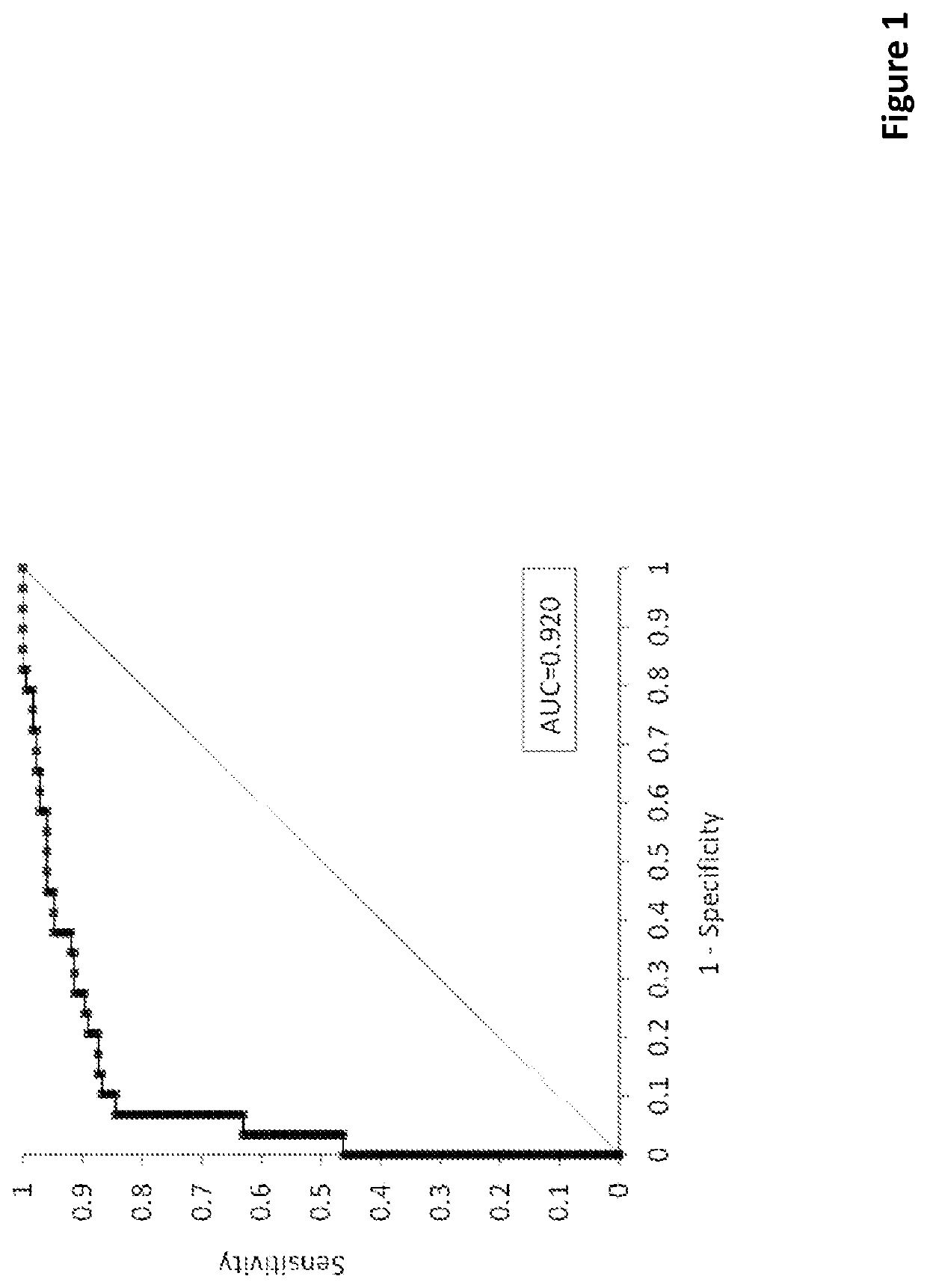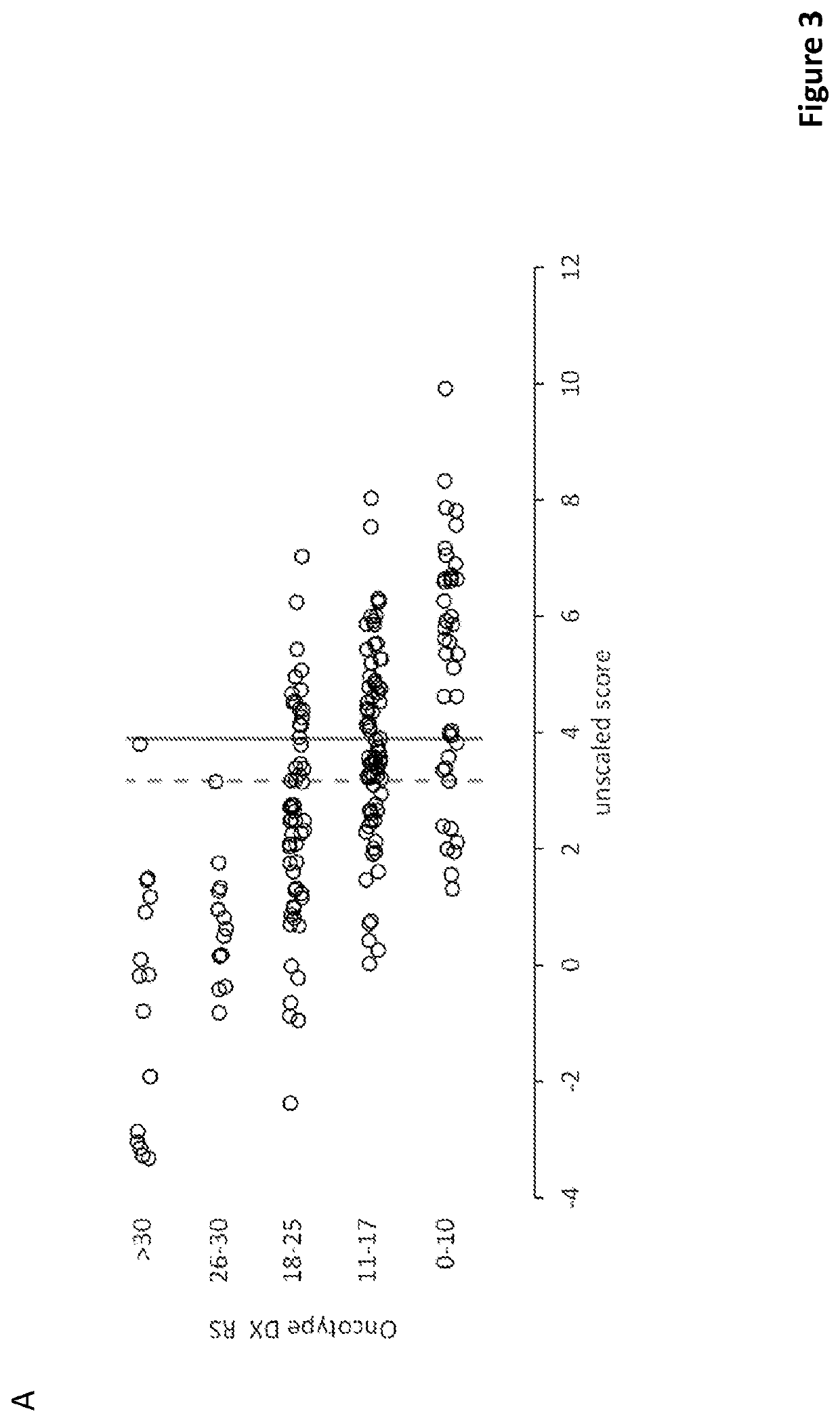Predictive methods in breast cancer
a breast cancer and predictive method technology, applied in the field of breast cancer prediction methods, can solve the problems of insufficient reproducibility of routine application of this marker, one of the most expensive assays, and lack of standardization across different laboratories
- Summary
- Abstract
- Description
- Claims
- Application Information
AI Technical Summary
Benefits of technology
Problems solved by technology
Method used
Image
Examples
example 1
Total RNA from FFPE Samples Using the RNXtract® Protocol
[0231]Fixation of tumor tissue with formalin and subsequent embedding in paraffin is a standard method in clinical pathology and allows long-term archiving of samples. Because of chemical modifications of nucleic acids in FFPE samples, special protocols are necessary to extract amplifiable nucleic acids. Three steps are required for this: (1) removal of the paraffin, (2) lysis of the tissue and release of RNA (de-modification of nucleic acids if required), (3) purification of RNA by several washing steps.
[0232]The RNXtract® kit (BioNTech Diagnostics GmbH, Mainz, Germany) allows purification without organic solvents, which can be conducted in a single reaction vessel.
[0233]In the first step, the paraffin contained in the FFPE sections is liquefied in an optimized lysis buffer. Subsequent addition of proteinase K leads to lysis of the tissue and release of cellular nucleic acids (RNA and DNA). The RNA is bound to magnetic particl...
example 2
the Gene Expression Level of the Biomarkers Using the MammaTyper® Kit
[0234]The MammaTyper® kit (BioNTech Diagnostics GmbH, Mainz, Germany) allows the determination of the level of expression of selected biomarkers at the mRNA level by means of reverse transcription quantitative PCR (RT-qPCR).
[0235]To determine the expression level of a biomarker at transcript level by PCR, RNA has first to be transcribed into complementary DNA (cDNA) via the enzyme reverse transcriptase (so-called first strand synthesis). The marker-specific cDNA is then amplified by a DNA polymerase and amplification is detected in the PCR in real time using fluorescently labeled hydrolysis probes. The RT-qPCR takes place as a one-step reaction in the MammaTyper® assay, i.e., reverse transcription of the RNA and subsequent PCR of the DNA occur consecutively in the same reaction mixture. In addition to the enzymes (reverse transcriptase and DNA polymerase), the enzyme mix contains dNTPs as well as salts and PCR addi...
example 3
and Validation of Unsealed Scores
[0243]Total RNA was extracted from whole surface 10 μm sections from FFPE breast cancer samples with a known RS result and a tumor cell content ≥20%. ERBB2, ESR1, PGR and MKI67 mRNA expression was measured by RT-qPCR on a CFX96 qPCR cycler using the MammaTyper® kit. On MammaTyper ERBB2-negative samples (40-□□Cq<40.4) and ESR1-positive samples (40-□□Cq≥36.9) a prediction model for an RS≤25 result was established using multivariable logistic regression. Based on this model and the training data, two cut-offs for confident prediction of low chemotherapy benefit patients in a clinical setting were established at 95% and 97.5% specificity. The model and the cut-offs were then fixed and validated in a second, separate set of breast cancer samples. ROC analysis was used to characterize predictive power of the continuous values resulting from the prediction model. Positive and negative predictive values for detection of an RS≤25 result were also determined o...
PUM
| Property | Measurement | Unit |
|---|---|---|
| Level | aaaaa | aaaaa |
Abstract
Description
Claims
Application Information
 Login to View More
Login to View More - R&D
- Intellectual Property
- Life Sciences
- Materials
- Tech Scout
- Unparalleled Data Quality
- Higher Quality Content
- 60% Fewer Hallucinations
Browse by: Latest US Patents, China's latest patents, Technical Efficacy Thesaurus, Application Domain, Technology Topic, Popular Technical Reports.
© 2025 PatSnap. All rights reserved.Legal|Privacy policy|Modern Slavery Act Transparency Statement|Sitemap|About US| Contact US: help@patsnap.com



